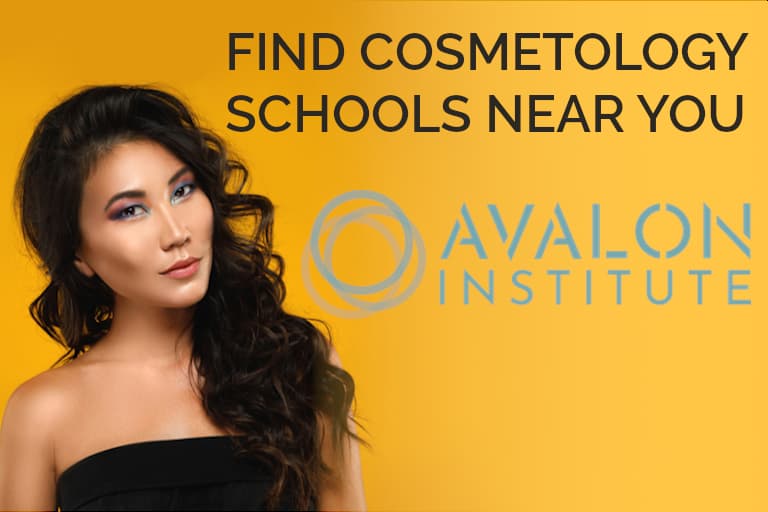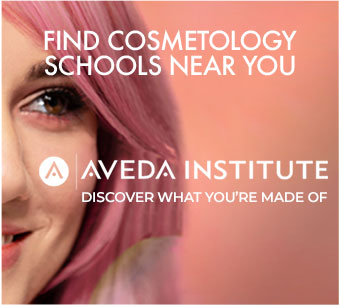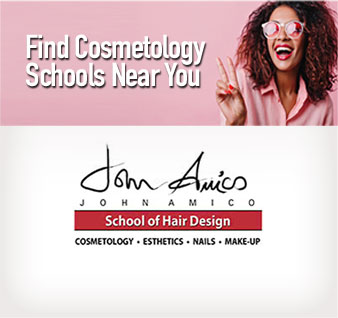Cosmetology School: Your Guide to Getting Started
Discover how to get started in cosmetology school. Here, you can begin your search for a training program, learn what to expect from cosmetology school, and find answers to other commonly asked questions. Where do you want to start?
Find a Cosmetology School Near You
Access our comprehensive directory listings by selecting a state below. You can browse all cosmetology programs within the state or narrow your search to specific metro areas.
sponsored content, school availability varies by location
sponsored content, school availability varies by location
sponsored content, school availability varies by location
sponsored content, school availability varies by location
sponsored content, school availability varies by location
sponsored content, school availability varies by location
What is Cosmetology School?
Cosmetology school is an educational institution or program that provides training in various aspects of beauty and personal care services. The curriculum typically covers a wide range of subjects related to beauty, skincare, hair care, makeup, nail care, and sometimes even salon management.
If you prefer to specialize in one particular set of beauty services, you may be able to get training just in that niche, but this depends on your state’s rules.
READ MORE: Cosmetology School vs. College: Which One Is Right For You
What Do You Learn in Cosmetology School?
Cosmetology programs vary, but all provide both class time and hands-on training. Most curriculums include education about hair, skin, and nails. Some provide more specialized training, such as electrolysis, hair braiding, barbering, or permanent makeup.
Specific topics you might study include:
- Sanitation procedures: Learn how to clean tools, keep a hygienic workstation, and discard waste from services like haircuts and manicures.
- Human physiology and anatomy: Learn how human skin, hair, nails, and all their associated systems function.
- Chemistry: Learn how products and solutions interact with the human body.
- Skincare procedures: Learn about waxing, peels, masks, microdermabrasion, skin conditioning, and other hair-removal techniques.
- Hair treatments: Learn all about shampooing, styling, coloring, cutting, and shaping hair.
- Nails: Learn how to perform manicures, pedicures, paraffin dips, and hand and foot wraps.
- Business management: Learn about communication, organizational, and computer skills that are necessary to the trade.
READ MORE: What You Need to Know About Cosmetology Courses
What Is Cosmetology School Like?
Cosmetology school focuses on the skills and knowledge that will relate directly to your future career. Your education will be a mix of theory, hands-on training, and practicing on clients. For a first-hand experience, follow featured student Ashley M. through her day as a cosmetology student:
Your experience in cosmetology school can be affected by a number of factors: whether you’re full-time or part-time, whether you are working while you’re in school, if you’re a parent, how long your commute is, etc.
READ MORE: What to Expect in Cosmetology School
How Do I Get Started in Cosmetology School?
To get started in cosmetology school, you’ll want to make sure you meet enrollment requirements, create a list of schools you might want to attend, talk to schools’ admissions teams, and tour the campuses. Featured student Delecia shares her experience in our Student Voices series:
Enrollment requirements vary by school, program, and state. The primary requirements focus on age and education. You’ll have to be at least 16 years old, 18 in some places. Some states require a high school diploma or a GED, but others do not. In some cases, however, you might have to take supplementary courses or exams if you’re not a high school graduate.
Visit your state’s cosmetology information page to learn about specific requirements and to begin your search for schools.
Which school is right for you will depend on your location, flexibility, specific training that is important to you, and other education options available to you.
Explore additional guides if you’re still unsure about getting started in cosmetology school.
Life After Cosmetology School
After completing cosmetology school, you will need to pass your licensing exam to begin working as a cosmetologist. You might also search for salons that offer paid training programs that help you prepare for working behind a chair.
We have more guides to help you plan your career path after cosmetology school.
sponsored content, school availability varies by location
sponsored content, school availability varies by location
sponsored content, school availability varies by location
sponsored content, school availability varies by location
sponsored content, school availability varies by location
sponsored content, school availability varies by location
Frequently Asked Questions
How long is cosmetology school?
Cosmetology school takes about one year for full-time students to complete. Part-time students may complete their training program in 18-24 months.
Learn more about how long cosmetology school takes in your state, and use our Training Hours Calculator to find out how many weeks you can expect to be in school.
How much is cosmetology school?
Many cosmetology programs cost less than $20,000. School cost will vary on location, specializations, the school’s brand, and state training hour requirements.
Learn more about how much cosmetology school costs and download our free student budget template.
How can I go to cosmetology school for free?
It is possible to go to cosmetology school for free . The types of financial aid available to you can depend on which school you go to, academic merit, need, and other factors.
Learn more about financial aid options and explore beauty school scholarships.
Can I get a cosmetology license without school?
In some states, you can obtain a cosmetology license through alternative training, such as apprenticeships.
All states set their own training hour requirements and acceptable paths to licensure. Select your location to learn more about state-specific cosmetology license requirements.
How old do I have to be to go to cosmetology school?
Typically, you have to be at least 16 years old to begin cosmetology school. Some state high schools offer cosmetology training programs. Other states require a high school diploma or GED to attend cosmetology school.
Visit your state’s cosmetology information page to find state-specific enrollment requirements.
Is cosmetology school hard?
Cosmetology school can be hard. Fast-paced curriculums, high student-to-teacher ratios, and other situational factors can make cosmetology school harder for some students.
Discover tips for how to succeed in beauty school and make sure you choose a school that is a good fit for you.


















